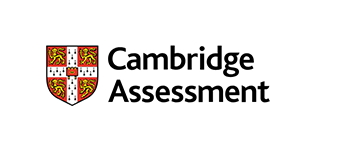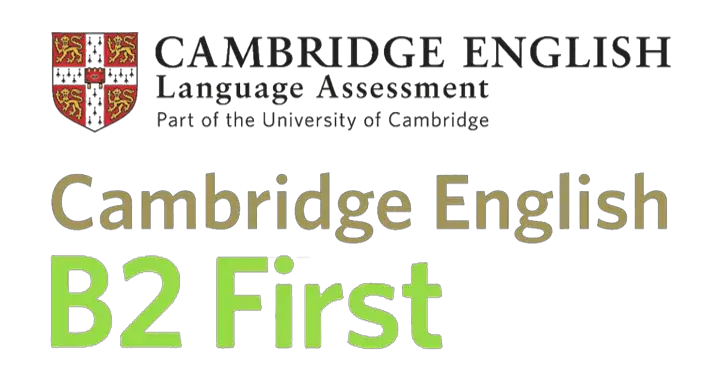The Listening part of the Cambridge B2 First exam is relatively straightforward. There’s nothing tricky about the format, and there won’t be any surprises on the day of the exam. But that doesn’t mean it’s easy. There are a few techniques and strategies which greatly improve performance.
As an EFL/ESL teacher preparing students for the B2 First, it’s your job to get the maximum results by offering the best guidance. This article is about helping you do that.

First, we’ll look at the structure and assessment of the B2 First Listening exam, then we’ll look at each of the four parts individually and consider how students can get the best marks. At the end, we’ll touch on the best way to practice for the exam.
I’ve been preparing students for the B2 First exam (and other Cambridge exams) since 2016, both as a private tutor and in public schools. For some, the listening is the easiest section, for others it’s the hardest. Either way, preparation is key.
Before getting stuck in, I highly recommend you download a copy of the B2 First Handbook. It contains masses of information about all parts of the exam. You can get it from this link.
What is the format of the Cambridge B2 First Listening exam?
Quick facts:
- Duration = approx. 40 minutes
- Two papers: question paper and answer paper for computerised marking.
- The listening exam is worth 20% of the overall B2 First grade.
- There are 4 parts: Multiple choice, Sentence completion, Multiple matching, and a second Multiple choice.
- There are 30 questions, each contributing one mark.
- Candidates listen to the audio TWICE.

In the exam, students listen to the audio, then are advised to write their answers on the question paper, where they can change them at will. At the end, they have 5 minutes to carefully transfer their final answers over to the answer paper, filling in the “lozenges”.
Also, in a few of the parts, there’s some time to read the questions before the audio plays, to get an idea of what to expect. While practicing, this may seem like an eternity, but under pressure in the real thing, the time vanishes.
And the test is fast. There aren’t long breaks for candidates to think about their answers. Once one part is done, it’s straight onto the next.
Fortunately, the four parts are fairly self-explanatory in terms of format. Let’s look at each in turn.
Part 1: Multiple choice
Part 1 looks like your standard multiple choice listening exercise.
There are 8 unrelated questions in which one or two people speak for about 30 seconds, and candidates have to choose the correct answer from three options: A, B or C. Each question repeats before moving onto the next, and all questions are labelled (they say “question one” before the audio).
Generally, the target of these questions is to identify the gist of the speech and the attitude of the speaker(s). For example, in a short dialogue about returning an item to the shop, does the customer want:
A – to get her money back in full?
B – to exchange her item for a different model?
C – to ask for the item to be repaired?
The key thing for students to realise about this part is that in each question, at least two, and usually all three, of the options will be mentioned.
The conversation could go like this:
I don’t really want you to fix the screen, because it’ll probably just break again. That said, the more expensive model could be more durable… no, I can’t afford it, so could I just have a refund?
Usually it’s a little longer than that, but you get the idea.
To get the right answer, your students can’t just choose the option they hear first, but must decide which answers are false and which one is true.
Part 2: Sentence completion
For me, this is the most important part of the exam, where the most points can be gained or lost. That’s because there are 10 points (making up a third of the overall score), and if students aren’t careful, they can get lost.
Students listen to a monologue for 3-4 minutes. It’s usually someone in the first person talking about their experiences with something. There are no breaks and no indication of which question should be answered at any specific time.
Questions come in the form of sentences with a blank space. Students have to fill the space with a word or short phrase from the monologue.
Usually it’s just one word, but occasionally it’ll be something like “bus stop”. Spelling is important, but most words should be familiar.
Students don’t have to think up the words themselves, they’re spoken in the audio. The hard part is knowing which word to write. Like in part 1, the speaker often mentions several options, of which only one is the correct answer.

As you can imagine, with no breaks or question indicators, it’s easy to get lost. Fortunately, questions are spaced quite regularly. It’s not like three come all in one sentence then you have to wait a minute until the next. They’re spaced out.
Once students have done the exercise a few times, they’ll get used to the rhythm. And practice is the best way to approach this part. Getting comfortable with the speed and the kind of language used to identify the correct answer is vital for getting a good mark.
So is keeping a cool head. Remind students they can listen to the text twice. If they don’t get the answer first time (or even second time), they should move on and make sure they’re ready for the next question.
Part 3: Multiple matching
In part 3, students listen to 5 people talking for 30 seconds on the same topic, for example what they usually spend money on. They have to match each speaker with one of 8 options. The options are the same for all 5 speakers.
For example, the eight options could be:
A. Luxury items
B. Events and experiences
C. Out-of-school opportunities for their children
D. Hobbies
E. Social meetings
F. Holidays and travel
G. House improvements
H. Saving for the future
One of the speakers may sound like this:
When I was a kid, I wanted to get rich so I could buy the best cars and have a watch made of gold. But as I got older, I realised there were more important things, like family and friends. I spend a lot on get-togethers with my workmates, going out and getting to know each other better. I should probably keep an eye on that spending though. I’ve been thinking about putting some money aside for when I’m old and retired.
Now, if you’ve been paying attention to parts 1 and 2, you’ll see a pattern emerging here. This exam is all about picking out the correct information from a sea of distractions.
In this example, the speaker mentions luxury items, family, social events, and saving for the future. But only one is the correct answer – social events.
All five speakers are like this. It can get a little confusing, and getting one answer wrong can have a knock-on effect.
With just five questions, this part contributes just half the marks of part 2. That seems a little strange to me, but it’s how the exam is set up.

Part 4: Multiple choice (again)
The final part of the listening exam is another multiple choice, but this is slightly different to part 1.
Students listen to a single extended conversation between two people, which is most often an interview. They must answer seven questions by choosing the right option from a selection of three: A, B or C.
Although the questions aren’t indicated by saying “question one”, it’s easy to follow, as usually there’s an interviewer who asks the interviewee about different things, and each time they ask a new question, it almost always means you’re on the next exam question.
I’m afraid this article is getting a bit repetitive, Once again, the speakers will mention something related to all three answers, but only one is correct.
How to prepare and practice for the listening test
The biggest thing that impacts students’ success in the listening test is how comfortable they are with the format.
Knowing the kind of language Cambridge likes to use, and getting familiar with the rhythm of transition from one question to the next allows students to approach the exam with a calm confidence.
So the best way to prepare for it is to do lots of practice papers. Get an official exam book with audio for several tests, for example the First Trainer (link to Amazon.com) which has six practice papers and extra practice questions.
If you’re a private tutor, set these practice papers for homework. When you’re in class with them, you don’t want to be sitting in silence while they listen to audio – they can do that in their own time.
In a larger class situation, logistically you’ll find it difficult to get everyone to do it for homework, so it’s more realistic to have everyone doing it during class.
Beyond practice papers, students should improve their English listening as a whole. Podcasts and YouTube are great for this. Whether it’s content designed for EFL/ESL learners, like Podcasts in English or general interest that happens to be in English, it all helps.
Conclusion
The key points to take away from this article are:
- Familiarity with the exam format is super important.
- Students shouldn’t just pick the option they hear mentioned – they have to filter the correct answer from the distractions.
- The exam goes quite quickly when under pressure, so when practicing, keep a fast pace.
There aren’t any hacks or tricks to gain quick points in the listening part. Most of it relies on the student’s ability to discern information, but knowing what to expect will help them keep a cool head.
Despite only having 30 questions, the listening contributes 20% to the overall grade, meaning every question counts more than in other parts, like the reading and writing. A good mark in listening can make the difference between a pass and a fail, so don’t take it lightly!








